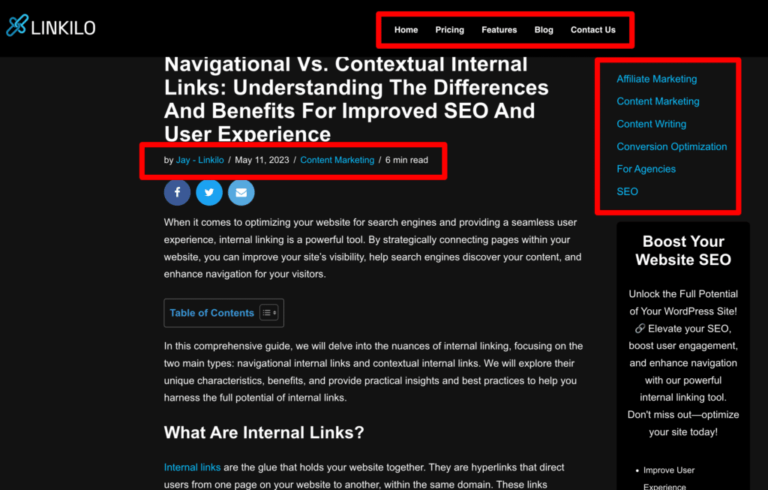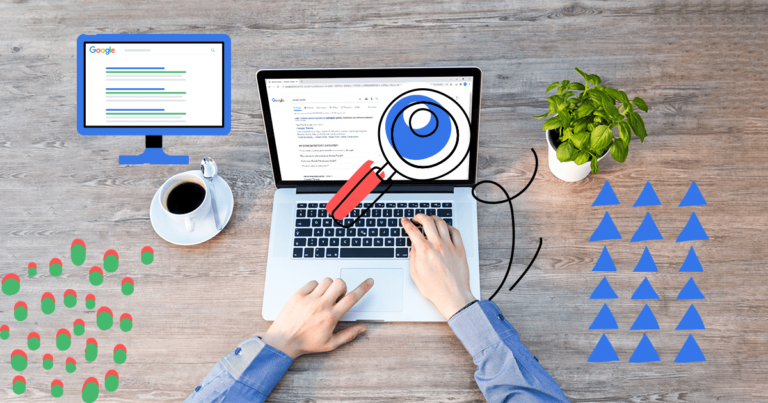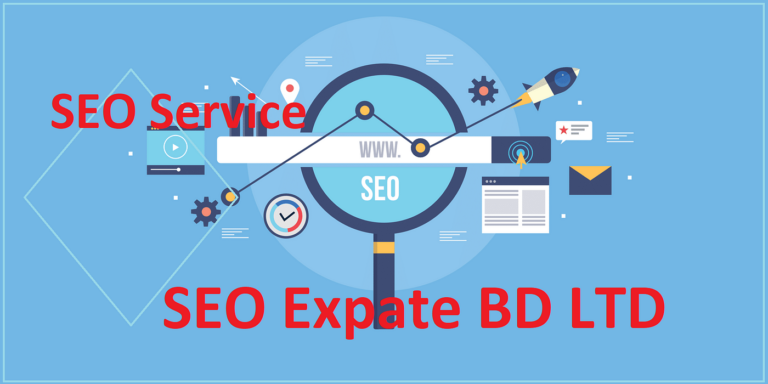Place internal links within content where they are contextually relevant and improve user experience. Prioritize their placement in body text, particularly in high-engagement sections.
Internal linking is a critical facet of on-page SEO, adeptly guiding both users and search engines through your website’s landscape. By incorporating internal links in your main content, you offer paths for visitors to explore related topics and for search engines to index your pages efficiently.
Strategic internal linking enhances the navigational experience, distributes page authority across your site, and can reduce bounce rates by providing visitors with additional reading options. Anchor text used for these links should be informative and natural, matching the page’s content you’re directing users to. Keeping in mind these aspects ensures that internal links serve their dual purpose of elevating user engagement and boosting SEO performance.
The Significance Of Internal Linking
Strategic placement of internal links on a website can significantly enhance user navigation. It allows visitors to easily access related content, which provides a more engaging experience. Well-placed links guide users towards high-value pages, increasing the time spent on the site and reducing bounce rates.
For SEO purposes, internal linking helps distribute page authority throughout the site. This practice supports search engines in understanding the site structure and the importance of each page. Proper use of internal links can lead to better rankings in search engine results.
Identifying Prime Real Estate For Internal Links
Your website’s homepage is key for internal linking. Think of it as your website’s heart. Place links to top-level pages to guide visitors. This creates a clear path for users and search engines. Use your homepage to link to important content, such as featured products or popular articles. Keep navigation simple and direct.
Internal links should reflect your site’s content hierarchy. Link from high-authority pages to deeper, related content. This boosts the visibility of lower-level pages. Make sure the links are contextual and relevant. Anchor text is crucial — use descriptive phrases that match the linked page.
Top Of The Page: Why It Matters
Internal links are vital for website navigation and SEO. Placing them at the top of the page within header navigation ensures visibility and easy access. Users often look here first.
Introductory content should weave in contextual links. These guide readers to relevant pages, enhancing their experience. Ensure links appear natural and meaningful.

Credit: cointelegraph.com
In The Heart Of Content: Opportunities For Engagement
Placing internal links directly in your content ensures users engage deeply. Each internal link should connect logically to the surrounding text. This method helps readers explore related topics effortlessly. For example, link a term to a definitory page to expand understanding.
Avoid interrupting sentences with links that do not relate to the content. This keeps the reading flow natural and improves user experience. It’s best to integrate links where they feel like a natural part of the narrative.
| Link Placement | User Advantage |
|---|---|
| Contextual Links | Enrich reading, increase knowledge |
| Relevant Topic Links | Promote content discovery |
| Anchor Text Links | Define complex terms, explain concepts |
End-of-page Strategies: Keeping Visitors On-site
The footer of your website can be much more than a design afterthought. It’s the ideal place for placing internal links that help users navigate your site. Think of it as a map that guides visitors to important pages.
Useful links in the footer can lead to your top products, services, or content. These links can increase page views and improve user experience. Ensure they’re clear and organized for easy use.
| Link Type | Footer Placement Benefit |
|---|---|
| Contact Information | Helps visitors reach out easily. |
| About Us | Invites visitors to learn more about your mission. |
| FAQs | Provides quick answers to common questions. |
| Blog | Encourages further reading on your site. |
| Privacy Policy | Shows your commitment to user privacy. |
Links to related articles or resources at the bottom of a page can retain visitors. This encourages them to explore your content further.
Multi-media Content: A Consideration For Internal Links
Multi-Media Content is key in modern web design. It draws in visitors. And keeping them engaged is vital. Images and videos are popular tools. They should be more than just eye candy. Make sure to embed internal links within your visual media. This practice can boost user interaction. It can guide visitors to related content.
For images, use HTML tags to wrap around. This turns images into clickable links. Don’t forget the alt attribute. The alt text should describe the image and hint at the linked content. With videos, include calls to action. Place these either in video descriptions or as overlay text with links. Engage with your audience by directing them through your site seamlessly.
Audio clips and interactive media also benefit from internal links. Podcasts could mention relevant pages. Direct listeners to them through links in your audio player’s description. Interactive elements, such as games or quizzes, provide fun opportunities. Use them to recommend additional content. These strategies help maintain an engaged and informed audience.
Monitoring And Adjusting Your Internal Link Strategy
Assessing link performance is vital for a successful site. Tools like Google Analytics help track how users interact with links. Start by looking at the click-through rates (CTR) of your internal links. High CTR means a link is doing well. On the other hand, links with low CTR may need a new spot. Keep an eye on the user’s journey through your site. This tells us which links keep people interested and moving.
To refine link placement over time, test different spots for your links. The beginning of content often works well. So does putting links in the middle or near bulleted lists. Don’t forget the power of a link in a sidebar or at the end of a paragraph. Think about where the eye naturally goes. Remember, a link’s spot should feel easy and natural.
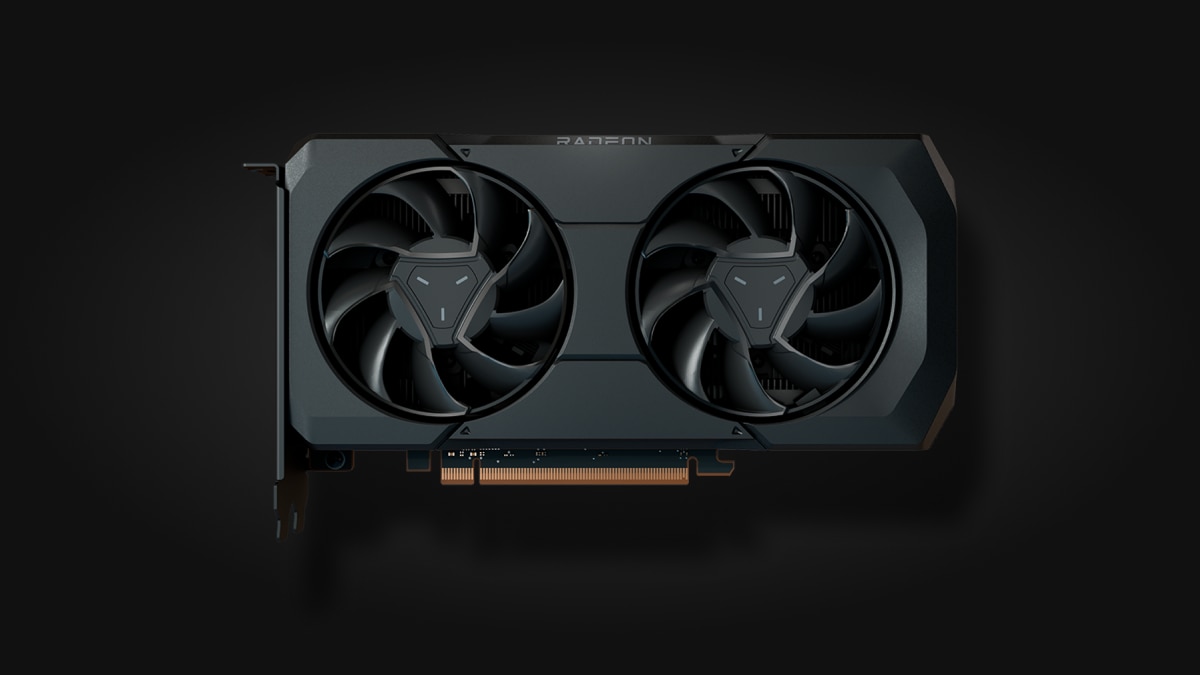
Credit: www.amd.com
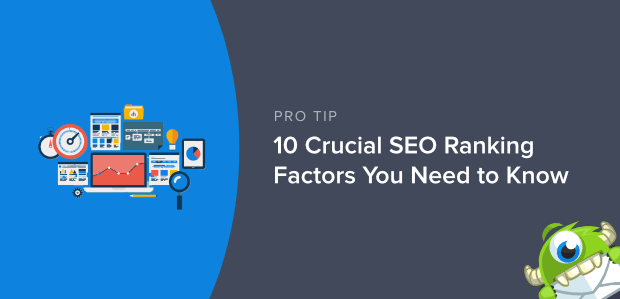
Credit: optinmonster.com
Frequently Asked Questions For Where Should I Place Internal Links On My Website?
What Is The Ideal Number Of Internal Links On A Page?
The ideal number of internal links on a page varies, but generally aim for 3-5 per 1000 words of content, focusing on relevance and user experience.
How Do I Optimize Internal Links For Seo?
Use relevant anchor text for internal links to describe the linked page. Ensure links are naturally integrated into content. Link high-authority pages to those needing a boost. Keep link structure organized and hierarchical. Regularly check for and fix broken internal links.
What Is The Internal Linking Strategy For 2023?
An effective internal linking strategy for 2023 focuses on relevancy, using keyword-rich anchor texts, and ensuring a logical site structure. Aim to link deep, avoiding just top-level pages, and regularly audit links to maintain site health. Prioritize user experience with every link decision.
How Do You Manage Internal Links?
To manage internal links effectively, strategically place them in content to guide users and boost SEO. Ensure they’re relevant, use descriptive anchor text, and maintain a logical hierarchy. Regularly audit links to fix broken ones and improve link distribution across your website.
Conclusion
Mastering the art of internal linking is a key SEO skill. Strategic placement enhances user experience and boosts rankings. Remember, links should flow naturally within content, guiding visitors to relevant areas. Perfecting this can amplify your site’s potential. Keep refining your technique for the best results.

